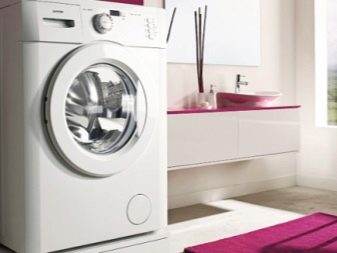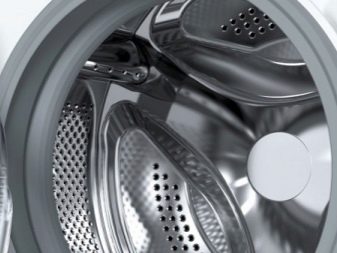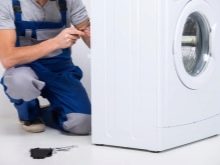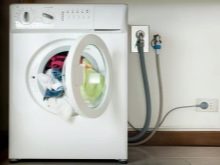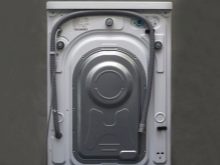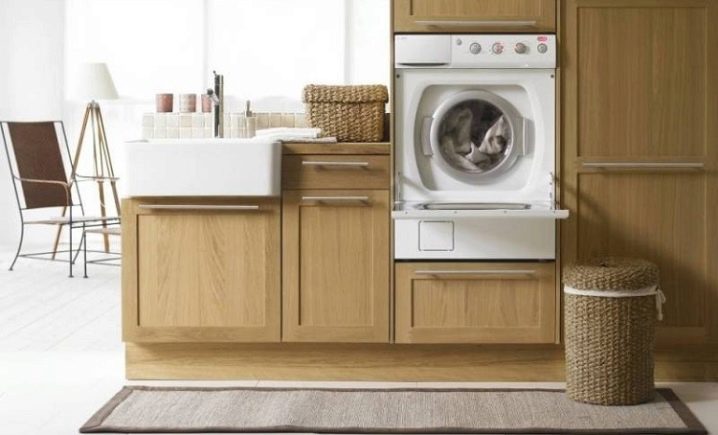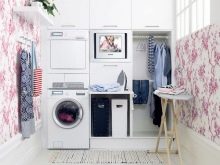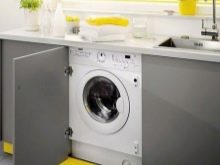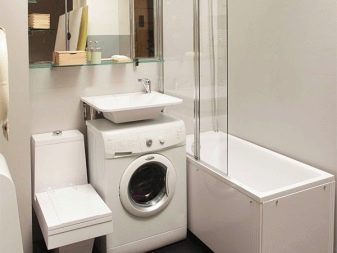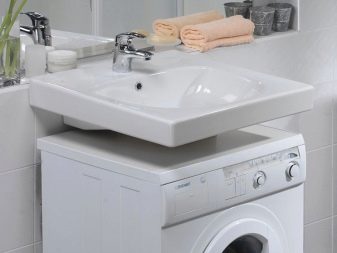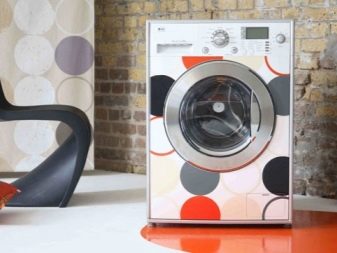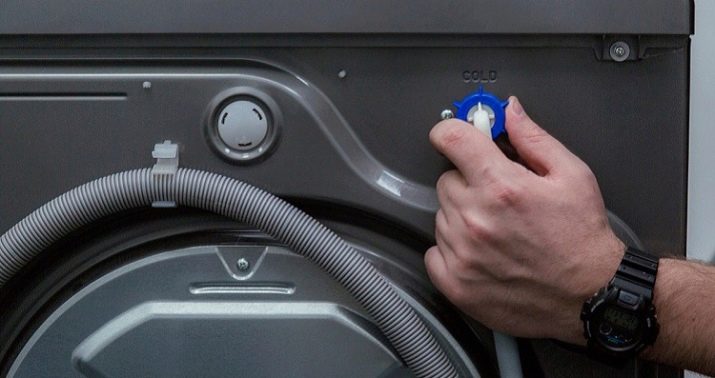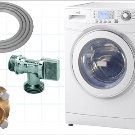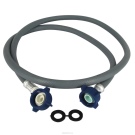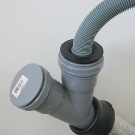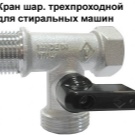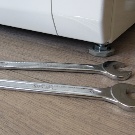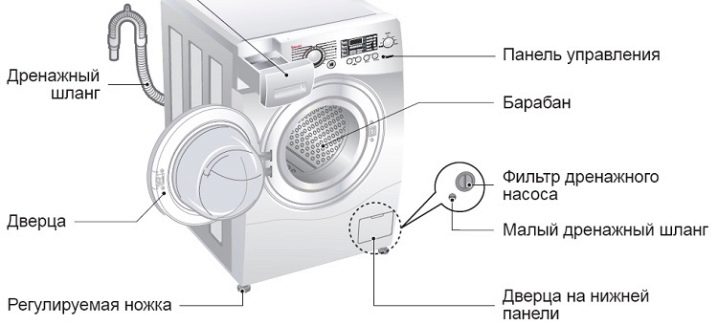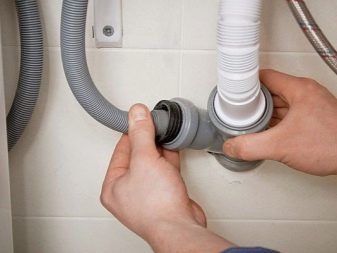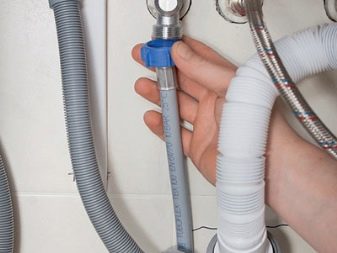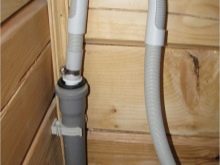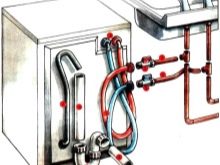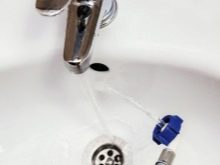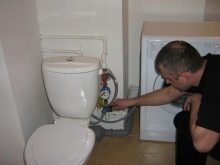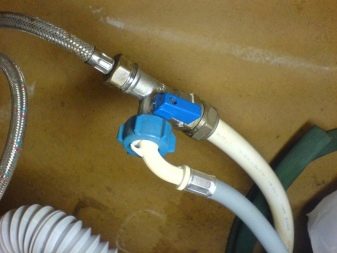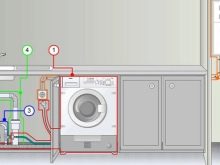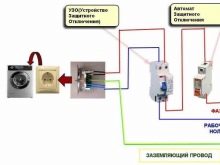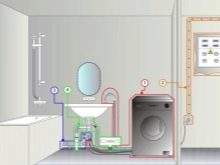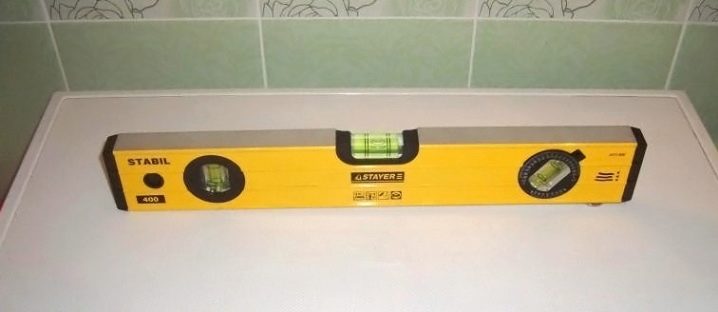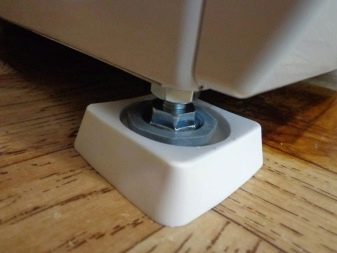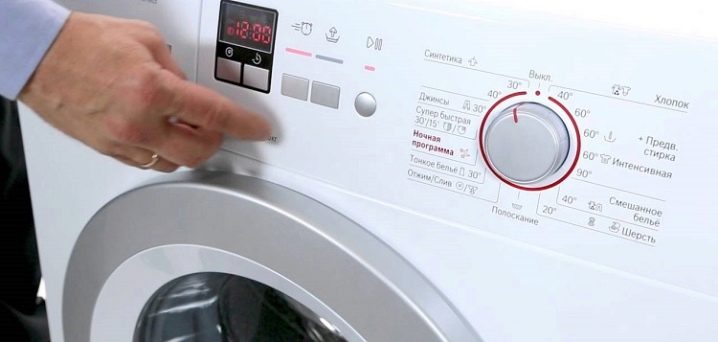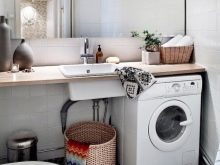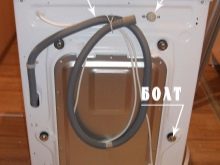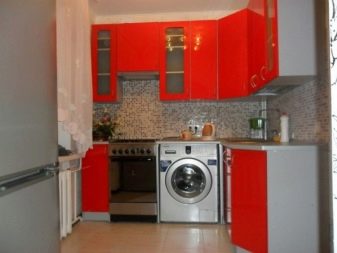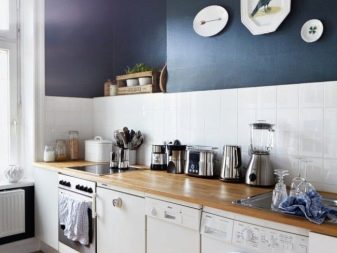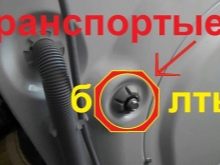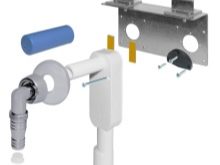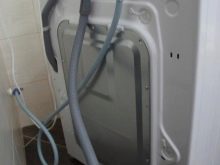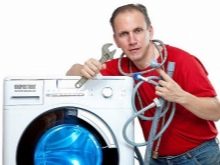Rules for connecting the washing machine to the water supply and sewage
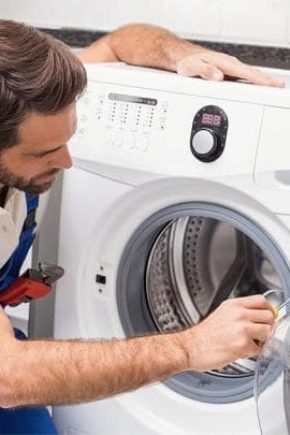
Currently, there is a washing machine in almost every home. This technique greatly simplifies the life of the hostess and allows you to save a lot of free time. You can install it yourself. Today we will tell how to properly connect the washing machine to the sewer system and plumbing.
Special features
It is hard to imagine a modern home in which there is no such household appliances as a washing machine. Such devices can be placed both in city apartments and in private residential buildings.The correct operation of such units largely depends on the quality of the connection to the sewer and plumbing systems. It is very important to carry out all the work correctly, so as a result not to face serious leaks and breakdowns of equipment. Connecting a machine automatic, we must not forget about the safety of its use when it comes to grounding and connecting to electrical wiring. Here it is possible to contact an experienced electricians or do it yourself, but only strictly according to the technology.
Connecting home appliances for washing may seem complicated to some users, but in reality there is nothing to worry about in these procedures.
Everything can be done by yourself using the appropriate tools and materials. In addition, there are several ways to connect - from the simplest to the more complex, so everyone will be able to choose the best option for themselves (and their home).
Location selection
Before exploring in detail how to properly connect such household appliances, you should be familiar with how to find a suitable place for her in a dwelling. And it should be done before going to the store.It is permissible to select the ideal model only after the final designation of a specific place for its installation.
Many users find this stage insignificant and even strange, because the optimal and logical place for a washing machine is the bathroom. However, this solution is not the only correct and optimal. This results from the fact that in the conditions of a bathroom rather high level of humidity always remains.
In addition, we must not forget that in such spaces it is undesirable to install electrical sockets - this is dangerous.
Pulling the cable outside the bathroom does not make any sense, and for two reasons.
- If the existing cable is extended or a special extension cord is used, then the manufacturer’s warranty is always removed from the equipment. Even the most competent replacement of the power cable will be perceived in the service center as a reason for the refusal of warranty service of the machine.
- Even if there is a good ground connection to the equipment in high humidity conditions, it still will not be a panacea for electric shocks from static electricity.In addition, this factor represents a danger to life, and is also harmful to chips in technology (with time in such conditions, they can stop working properly).
That is why experts do not advise to choose to place the typewriter only bathroom. The kitchen can become a more suitable place, because it has free access to the water supply and sewage systems, and it is also possible to place the equipment away from other objects in space. To power the machine get from the outlet located in the kitchen. As a rule, they are located on separate machines in distribution panels.
But do not think that in the kitchen the selection of a place to install a washing machine ends. There is another way to solve this issue - if there is a utility room in the vicinity of the bathroom, you can also install equipment there. Also, owners often have cars in the corridor (if the free space allows). In such a situation, the technique is often hidden behind a false-wall. In these conditions, it is possible to provide access to water supply and sewage, but there will be no high humidity.In addition, one does not have to face the common nuisance of the location of the equipment in the kitchen - pollution, which is very difficult to avoid in the process of cooking.
Having chosen the ideal place for the placement of the washing machine, it is important to accurately measure out the available dimensional parameters on which it is worth relying in the process of selecting the ideal technique.
Required materials and tools
As with any work, you need to start connecting the machine after purchasing all the necessary materials and accessories.
As for the materials, here you will need:
- siphon - through it the drain hose will be connected to the pipe;
- flexible metal braided hose - it will be required for cold liquid (dimensions of such an element are 3/4 inch);
- a plastic hose will be needed to drain (often in the set are short hoses, but they simply do not reach the connecting area);
- tee designed for pipes made of metal with a stopcock (3/4 inch);
- three-core wire having a cross section of not less than 2.5 square meters. mm - it will come in handy for the outlet through which the connection of household appliances to electricity will take place (note, if the given part has too small section,it may overload and even fire, so it is recommended to carry out a number of calculations for the cable cross section);
- auto switch on 16A and RCD - such parts will protect households from electrical damage, as well as insure the machine from serious damage.
When connecting to the sewer and plumbing systems will need a supply of the following devices:
- adjustable / wrench;
- special ball valve;
- fitting, tee or crimp coupling (the choice depends on the specific type of pipe in the system);
- threaded adapter;
- withdrawal (if required);
- flexible hose.
Step-by-step instruction
If you have stocked up with all the required tools and materials, then you can proceed to connecting the washing machine to all the necessary systems. To carry out these works will do it yourself. The main thing is to follow all the instructions clearly and responsibly approach each stage of the installation.
Mounting plum
At first it may seem that organizing the drain of such household appliances is as simple and understandable as possible. However, in fact, it all depends on certain nuances of connection.
It can be done in two main ways.
- Temporary. With such a connection, the drain hose is lowered into the toilet or bath (in the case of a combination).
- Stationary. At the same time do inset into the sewer. However, here the owners often face a number of problems.
Connecting the machine to the sewage system is made in accordance with the following important requirements:
- the length parameter of the drain hose should not be too impressive, as this can cause a substantial load on the drain pump, which can cause it to break;
- in the course of connecting the drain to the siphon, it will be possible to prevent the penetration of characteristic odors into the equipment directly from the sewage system, which is a significant advantage.
The drain hose must be connected to the sink siphon or sewage. The result is a very strong and tight connection.
And now let us analyze in detail how it is possible to ensure the discharge of such household equipment by various methods. It is possible to drain water from the apparatus into the bath or wash basin. This option is quite simple, but not very practical.Some manufacturers add an element such as a special hose-hook to the set. It is fixed on the wall of the bath or sink. The main advantage of this solution is that to ensure it will not need to engage in connecting equipment to the sewage system.
It should be borne in mind that this solution has many more disadvantages. First, the contaminated liquid will stain the bath or sink. This trouble will be particularly acute if the plumbing is made of acrylic. Secondly, even a very minor blockage in the sink during the draining process can be a provoking factor for flooding the neighbors. In addition, in many cases due to strong vibrations in the process of draining the hook falls to the floor, which can also cause leaks. Connection can be made using a siphon. In order to drain the equipment was stationary, you will need the specified part. The siphon is equipped with a tap for machines. It should be under the knee of the siphon. Otherwise, the contaminated liquid may be sucked into the equipment itself. Because of this, it can "settle" bad smell.
You can also make the connection to the sewer pipe, which should be 4-5 mm thick. Usually a special sealing element and an S-shaped hose are used here. The last part is inserted directly into the pipe so that it does not come into contact with the drains. The top of the hose should be placed at a height of 55 cm from the floor.
Lead to the water supply system
It is also possible to connect the washing machine to the water supply system independently. There are several ways to carry out this operation.
It is possible to connect without using plumbing. This option is usually addressed when it comes to a country house, since life outside the city must also be comfortable. The absence of a water supply system in such conditions should not be an obstacle to the necessary benefits of civilization.
To make such a connection you need:
- fix a large tank at a height of 3 m;
- then directly connect the hose to the machine itself.
This will form the required pressure. If you do not want to engage in work at heights that are associated with the tank, then really get along with purchasing a special pumping station.However, we must bear in mind that the latter solution can cost a pretty penny.
Some owners connect the machine to the water supply using a tee. Such an option is very simple and affordable. It requires a flexible hose. It will be necessary to attach it to the tap or plumbing. The hose to be connected must have the required length. As for its connection directly, it is here that they use the tee.
Before each start of the washing, the tap hose must be unscrewed, which is not very convenient. Because of this, this method is recommended to be used temporarily. Connecting such equipment to the plumbing wire of a toilet cistern is not the worst solution, but only in situations where they are next to each other, and this is not always the case.
Connection can be made through such elements as metal-plastic pipes. To do this, use a fitting. This option is recommended to contact the owners of pipes made of metal. In a cold pipe, you will need to cut a small part, and then fix the fitting (connection tee) in the opening, to which a special ball valve will join.At the same time, the joints must be supplemented with sealing elements in the form of rubber cuffs.
Also connecting the washing machine to the water supply system will be done with the use of crimp coupling. For such work, a flexible hose ¾ dm is required. It is attached to the equipment and the faucet that is installed in the water supply using a crimp coupling. Do it if the pipe is made of metal.
The coupling itself consists of several main parts - the halves that they put on the pipe and tighten it with the help of bolts. In addition, in these details there is a tap with a thread on which the valve will need to be fixed (the ball variant will be more suitable). That there was a water inflow, in a pipe make a special hole through the coupling.
Electricity grid
The final, but no less important stroke in the installation of the washing machine is its connection to the mains. If you need an element such as an extension cord, you should only use a variant that has a ground connection. A good option would be to connect the machine using a separate wire from the electric meter.On such details there is initially an automatic protection, which makes them more practical. If the wire of this type has not been conducted, then you can turn to a special portable RCD.
It should be borne in mind that in the houses of the old building it is desirable to replace the electrical wiring before connecting similar household appliances in order to avoid unpleasant consequences. It is necessary to introduce into the system a variety of high-quality protective devices and without fail to make a ground contact.
Alignment
If you decide to self-fix the washing machine in your home, then you should remember that it should be placed strictly horizontally. To do this, when setting up such a technique, a building level should be used. Note that deviations should not be greater than 2 degrees (of course, it is better to avoid any bevels).
The level must be put the upper corps. As for the alignment itself, it is usually produced with the help of legs, which can be adjusted in height. At the end of the adjustment, these parts are fixed using special nuts - they need to be tightened with a key in the counterclockwise direction.However, here it is worth being careful not to break the thread - do not apply too much extra effort.
Note that it is extremely important to align the body of the machine technologically.
To do this, it is advisable to follow simple recommendations from experts:
- if the floor in the room where you install the machine automatic, is smooth, and the legs of the technology itself are securely fixed, located on a rubber mat, household appliances will be stable;
- in order to check the correctness of the installation of equipment, it is necessary to slightly press the corners located in opposite sides of each other: if the machine did not begin to swing or roll over, this will mean that it is fixed correctly.
Operation check
If you connected the washing machine, then you should check the correctness of its operation.
You can make sure that you have carried out all the work correctly by the following characteristic features:
- in a tank of the machine water is typed for a short time (at the same time liquid reaches the required mark);
- there is a uniform rotation of the drum;
- no leakage occurs during operation;
- warming up begins approximately in 5-6 minutes after the tank of the machine is filled;
- in the process of the machine is normal and healthy drain;
- during the spin cycle does not occur in the work;
- the washing machine works quietly.
Installing and connecting such equipment, we must not forget about the features of each specific model. That is why experts strongly recommend not to neglect familiarity with the manual, complete with cars.
Useful tips and tricks
Install and connect the washing machine machine in the apartment or private house is quite simple. The main thing is to follow the instructions and use reliable materials / tools.
In addition, it is desirable to take into account a number of tips and recommendations from experts on the installation of such household appliances.
- Having chosen a suitable place for the installation of the machine, it is necessary to dismantle some of its parts, which in the process of transportation play the role of stoppers and dampers. This process cannot be neglected in any case, otherwise the equipment may suffer. In addition, you need to remove the shipping bolts, expansion bars and safety brackets. A detailed description of such works can be found in the instruction manual of the equipment.
- Note that it is prohibited to connect the contact responsible for grounding to the heating batteries or mains water and gas supply.
- Do not forget to put the case of household appliances in accordance with the indicators of the construction level (most often use bubble or laser tools). If you “overlook” at least a tiny bias, this will lead to impressive vibrations and unnecessary noise when the machine is operating.
- Do not place individual pieces of rubber or linoleum under the feet of the machine. For this it is better to choose a full rubber mats. In many cases, experts and do not advise the use of any substrate - it is enough to properly adjust the legs.
- Many users discard shipping tickets after installing and connecting a washing machine. You should not do this, because they may be needed in the future, for example, if you move to a new place of residence, taking with you all household appliances from your previous home.
- Many experts advise to turn off the tap after completing each wash. Thus, you will be able to avoid a possible “flood”.
- Do not throw away the packing and shipping materials by installing and connecting the typewriter. These items are required for warranty service.
- Choosing the optimal place to install the machine you need to remember that its body should not be in contact with other metal surfaces. These can be batteries, cast iron pipes or towel dryers.
- If you do not want to put a washing machine in the kitchen or in the hallway, and in the bathroom is too small an area, you can install the equipment in the last under the sink. So you can save useful space in the bathroom.
- For a small-sized kitchen there is a good solution - the purchase of a built-in washing machine, which will find its place under the countertop of a kitchen set.
- If the equipment is located at a distance of more than 3 m from the water pipe, then the most successful option would be a separate connection by installing a metal-plastic pipe, in order to surely exclude possible leaks in inaccessible places.
- In the areas where the machine is connected to the water supply system, it is imperative to install a tee, a separate valve that will turn off the water supply in emergency situations.
- If you independently connect the equipment to the mains, then you should know that such equipment must be included in a special moisture-proof outlet.
- If there is no grounding, then in the event of a malfunction in the course of the work of the machine there will be a real danger of electric shock.
Do not touch the equipment frame. Be sure to warn children about this, but it is better to completely ban them from entering the room with the machine while it is in effect.
- If a part such as a non-return valve is missing in the design of your washing machine, then it should be installed, taking into account the limitations of the level at which the drain hose (pipe) is located. In most cases, the manufacturer specifies the maximum and minimum indicators of this level.
- Connecting the machine to the plumbing and sewer systems, special attention should be paid to the strength of the pipe. If the maximum reliable fixation is absent, the connection areas may lose the tightness necessary for them, which will eventually lead to leaks.
- Experts believe that the best option for connecting the machine to the sewage system is a stationary discharge of liquid. In this case, there will be no cause for concern for the correct location of the hoses installed at the time - with a stationary method of switching on, there is undoubted reliability.
- Connect washing machines to the plumbing system should be using special valves of the shut-off type and ball valves.
- Checking the correct functioning of the installed equipment should ensure that even at the end of the wash plums continued to operate properly.
- In the process, the engine of such household appliances should not rattle. If such sounds are present, it may indicate serious problems with the machine.
- Tightening and tightening fasteners, no need to exert extra effort. Take care, otherwise seriously damage the thread.
- Before starting the machine, be sure to inspect its loading door. Some manufacturers install in these places a special locking elements that need to be removed, otherwise you can provoke serious damage.
- Get all the accessories / tools to connect the washing machine in the checked outlets, so as not to encounter low-quality goods that will quickly turn out to be unusable.
- Despite the fact that the scheme of connecting the machine to the water supply and sewage system is quite simple and clearYou should not go on to carry out such work if you doubt your abilities or are simply afraid to make a mistake.
Then it is better to turn to specialists who quickly and seamlessly install such equipment.
For information on how to properly connect the washing machine to the water supply, sewage and electricity, see the following video.
